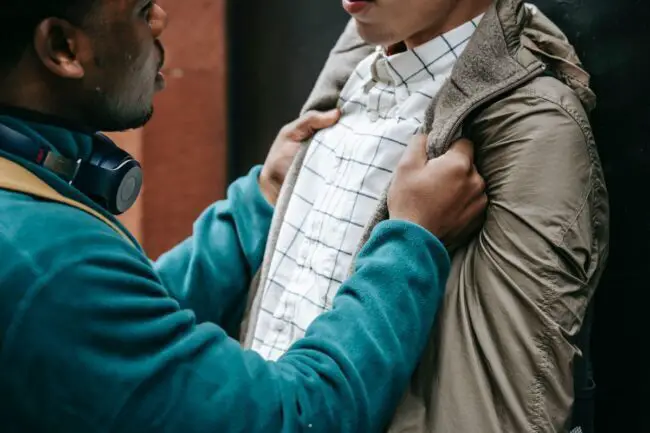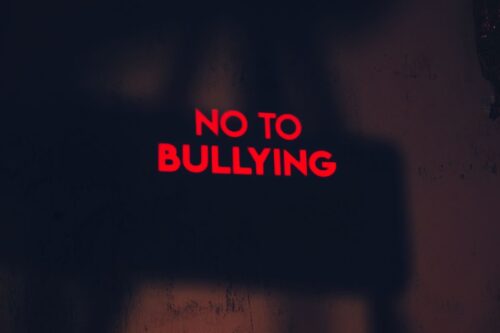How to Combat Autism and Bullying Behavior Once and For All
Autism and bullying continues to be a significant and pervasive problem for many individuals of all ages on the spectrum. Even with increased awareness and acceptance of autism in recent years, neurodiverse individuals still face considerable stigma and misunderstanding in our society.
This lack of knowledge makes children and adults alike common targets for bullying in autism and harassment.
 Recent large-scale studies estimate that children with autism are two to three times more likely to suffer from bullying in autism than their neurotypical peers.
Recent large-scale studies estimate that children with autism are two to three times more likely to suffer from bullying in autism than their neurotypical peers.
Surveys of parents find that up to 77 percent of autistic kids have been bullied at some point. These disturbing statistics have sadly remained consistent over the past several decades, even as our understanding of autism has grown.
The autism and bullying tactics and ostracizing often start young and continue well into adulthood.
Bullying is still a common occurrence for many children, regardless if they are neurodivergent or not.
I have some experience with it myself when I was in middle school. I was mocked for being quiet and a little socially awkward but it was normal to not always fit in at this stage of life. Many kids of any ability get bullied when in they are school but that doesn’t make it right. Not at all.
Despite of what I’ve been through, I made it, I finished middle school with good grades, and I even talked with the person who bullied me, and believe it or not, we later developed a mutual respect for each other.
I’m glad and proud of what I have accomplished in spite of autism and bullying, and I hope you can encourage your child and/or loved one to do the same if they have the same problem.
There are several reasons why people with ASD remain disproportionately vulnerable to bullying in autism across all ages, even today. Here are factors contributing to pathologizing differences and applying labels that often result in autism and bullying.
Top 6 Reasons for Why Autism and Bullying is a Common Occurrence
- Difficulty with Social Skills
Navigating social situations, reading subtle cues and communicating effectively can be challenging for those with autism spectrum disorder. Making age-appropriate friendships and fitting into social hierarchies pose obstacles.Bullies frequently exploit these difficulties by mocking socially awkward behaviors, orchestrating public embarrassment, or excluding autistic peers from groups and activities.
- Repetitive Behaviors
The tendency toward repetitive physical movements, speech patterns, rituals or intense interests in specialized topics can also make children and adults with ASD stand out as visibly “different” from neurotypical norms.Bullies prey upon these stimming behaviors or obsessive interests, using them as fodder for humiliation, criticism and abuse.
- Sensory Sensitivity
Many people with autism have enhanced sensitivity to sounds, textures, smells, tastes and other sensations. Loud noises, certain fabrics or even the cafeteria scene at school can cause overwhelming distress. Bullies intentionally trigger these sensitivities through actions like making loud noises to startle autistic peers.
- Communication Challenges
There is great diversity in communication abilities across the autism spectrum, but difficulties with speech, language and nonverbal expression are common. Some may be completely nonverbal, while others have sizable vocabularies but struggle to converse fluently.Bullies often target autistic children and adults who speak differently, making fun of stuttering, unusual speech patterns, or reduced verbal capacity.
- Lack of Support Systems
Making and keeping friends can be hard for people with autism, especially if they change schools or jobs frequently. Having a smaller circle of friends means having fewer allies in social situations.Bullies recognize this isolation and perceive people on the spectrum as easier targets with fewer defenses. Autistic people are less likely to report bullying as well due to wanting to fit in and masking behaviors.
- Power Imbalances
In many cases, bullies hold positions of power over their autistic targets – whether through popularity, social status, physical size or just having a loud voice.They exploit this advantage to repeatedly victimize more vulnerable members of the autism community. Autistic youth in particular find it hard to stop the bullying on their own.

Bullying is a major mental health risk factor for anxiety, depression, low self-esteem, school avoidance and even suicidal ideation. The ability to build successful social connections and professional networks can also be hindered well into adulthood.
But despite these challenges, there is hope. Just being aware of why people with autism are vulnerable is an important first step. There are also concrete strategies that autistic individuals, families, schools and communities can adopt to help prevent and respond to bullying.
What Individuals Can Do Themselves to Prevent Bullying in Autism
- Find even one sympathetic friend or ally. Having social support makes a huge difference. Look for other friends or colleagues who are caring and accepting.
- Learn techniques to walk away from bullying situations. Removing yourself helps deny the bully power in that moment.
- Report bullying incidents to authorities like school principals, workplace HR, or law enforcement. Creating a record is key even if action is slow.
- Build real confidence through interests, skills and talents – not surface “popularity.” Reframe hurtful messages with your self-knowledge.
- Consider counseling or therapy if trauma symptoms or anxiety emerges. Healing past bullying wounds will help gain resilience.
- Join autistic-run organizations online or locally. They offer safe spaces, advice and advocacy.
What Families Can Do to Stop Autism and Bullying
- Advocate forcefully for your child if school officials do not respond adequately to bullying reports. Be prepared to elevate concerns.
- Teach strategies to avoid or walk away from bullying situations if possible. Help your child identify allies.
- Emphasize talents and strengths at home to counter damage from cruel bullies. Provide social skills coaching.
- Speak out about bullying toward those with disabilities. Support policies to protect more vulnerable children and discipline bullies.
What Schools & Communities Can Do to Stop Autism and Bullying
- Implement comprehensive no-tolerance policies on bullying and discrimination, with clear reporting procedures. Apply policies consistently.
- Educate students on autism acceptance and inclusion. Highlight autistic voices and experiences in curriculum materials.
- Train staff, coaches and youth program leaders on recognizing and responding to bullying of students with disabilities.
- Increase supervision in less-structured areas like playgrounds, lunch rooms and between classes. Have trusted adults intervene.
- Support autistic students in finding friends and participating in activities. Foster a culture of caring.
- Start anti-bullying initiatives led by students. Encourage youth to treat everyone with respect, regardless of background.
Creating Spectrum-Friendly Communities Against Bullying in Autism
While raising awareness about why people with autism face bullying is important, the next step is taking concrete actions to create more inclusive and supportive communities.
By adopting a few key strategies, we can start building environments where those with autism spectrum disorder can learn, live and work free from harassment and not be subject to autism and bullying.
At Schools:
- Hire counselors trained in working with autistic students. Have them available for regular check-ins, crisis intervention and counseling. Also train general staff on trauma-informed care.
- Survey autistic students regularly about bullying experiences. Track progress and intervene with repeat bully offenders using consistent discipline procedures.
- Create “safe spaces” like resource rooms where autistic students facing bullying and sensory overload can self-regulate and get support during the school day.
- Start “Autism Alliance” student clubs to bring together neurodiverse and neurotypical students. Promote friendship and organizing around relevant issues.
- Offer social skills and assertiveness training workshops specifically for autistic students led by experienced counselors. Practice handling challenges.
- Work with school mental health professionals to make anti-bullying policies and reporting procedures simple to understand for students with learning differences.
At Work:
- Train all employees on neurodiversity, unspoken bias and recognizing signs of bullying of autistic adults. Make anti-harassment policies clear.
- Have straightforward procedures for reporting abusive coworkers. Protect whistleblowers from retaliation. Follow up with concrete action.
- Accommodate needs of autistic workers like allowing noise-cancelling headphones to create sensory-friendly workstations.
- Offer coaching services through HR to help autistic employees navigate social situations, office politics and interactions with colleagues.
- Start employee resource groups specifically for neurodiverse workers and allies. This creates community and support.
- Hire job coaches to assist autistic individuals with tasks, schedules and mitigating issues as they arise. Check in regularly.
In the Community:
- Promote awareness of autism and inclusion during national campaigns like Autism Awareness Month (April). Sponsor community events showcasing abilities.
- Support creation of sensory-friendly public spaces and events accommodating sensitivities. For example, theaters, museums or shopping times with reduced noise/lighting.
- Fund development of comprehensive mental health and counseling services tailored to autistic teens and adults. Make therapy accessible.
- Create jobs programs to help autistic individuals gain work experience in accepting environments. Teach soft skills for long-term success.
- Advocate for better legal protections for people with disabilities. Push for policies to hold schools, employers and property owners accountable for preventing harassment.
- Sponsor autistic self-advocates to speak to schools, workplaces, police and the public. Change attitudes through lived experiences and ending media stereotypes.
The ideal of inclusion, accessibility and safety for all requires us to identify where and how we fall short – whether it be in protecting classmates, supporting coworkers or assisting community members. We all gain when people with diverse abilities and perspectives are embraced and empowered to participate actively in society.
Together, more accepting schools, workplaces and communities are within our reach.
The stigma and lack of acceptance that perpetuates bullying of those with autism will take time and continued effort to overcome. But a future without abusive treatment of people with disabilities is possible if we confront the problem directly.
With greater understanding and support, people across the autism spectrum can gain confidence in themselves and their right to be accepted as they are. The responsibility falls on all of us to speak out against cruelty, promote inclusiveness in our schools and communities, and empower those with autism to thrive.
Additional Misconceptions That Lead To Autism Stigmas and Stereotypes
Learn more about other stigmas and stereotypes that autistics face:
· Why Labeling People Can Lead to Stereotyping and Discrimination
· Autism Media Stereotypes: We’re Not All Geniuses, Savants, or Lonely
· Absurd Plot About Autism and Evolution and Why It’s Harmful
· Moving Past the Tired Conspiracy Theory of Vaccines and Autism
· Discover the Powerful Bond Between Autism and Pets
· 3 Reasons Why Pathologizing Crushes Autism Acceptance and Inclusion
· The Hidden Hurdles: Challenging Autism Stigmas in Today’s Politics
· History of Autism: Revealing Shocking Mysteries from the Past
· Knocking Down the Stigma to Autism Obsession
